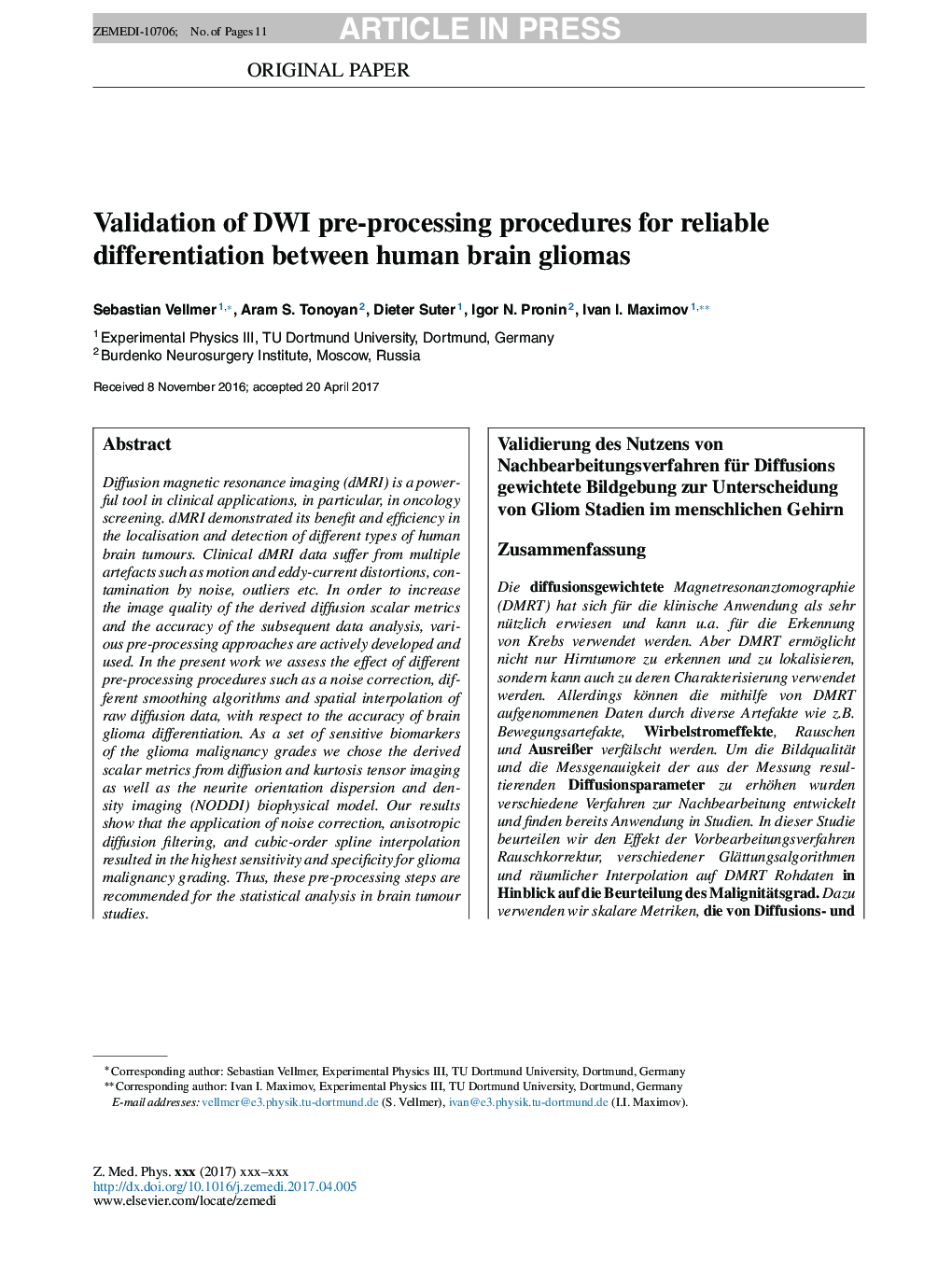| Article ID | Journal | Published Year | Pages | File Type |
|---|---|---|---|---|
| 8253182 | Zeitschrift für Medizinische Physik | 2018 | 11 Pages |
Abstract
Diffusion magnetic resonance imaging (dMRI) is a powerful tool in clinical applications, in particular, in oncology screening. dMRI demonstrated its benefit and efficiency in the localisation and detection of different types of human brain tumours. Clinical dMRI data suffer from multiple artefacts such as motion and eddy-current distortions, contamination by noise, outliers etc. In order to increase the image quality of the derived diffusion scalar metrics and the accuracy of the subsequent data analysis, various pre-processing approaches are actively developed and used. In the present work we assess the effect of different pre-processing procedures such as a noise correction, different smoothing algorithms and spatial interpolation of raw diffusion data, with respect to the accuracy of brain glioma differentiation. As a set of sensitive biomarkers of the glioma malignancy grades we chose the derived scalar metrics from diffusion and kurtosis tensor imaging as well as the neurite orientation dispersion and density imaging (NODDI) biophysical model. Our results show that the application of noise correction, anisotropic diffusion filtering, and cubic-order spline interpolation resulted in the highest sensitivity and specificity for glioma malignancy grading. Thus, these pre-processing steps are recommended for the statistical analysis in brain tumour studies.
Related Topics
Physical Sciences and Engineering
Engineering
Biomedical Engineering
Authors
Sebastian Vellmer, Aram S. Tonoyan, Dieter Suter, Igor N. Pronin, Ivan I. Maximov,
